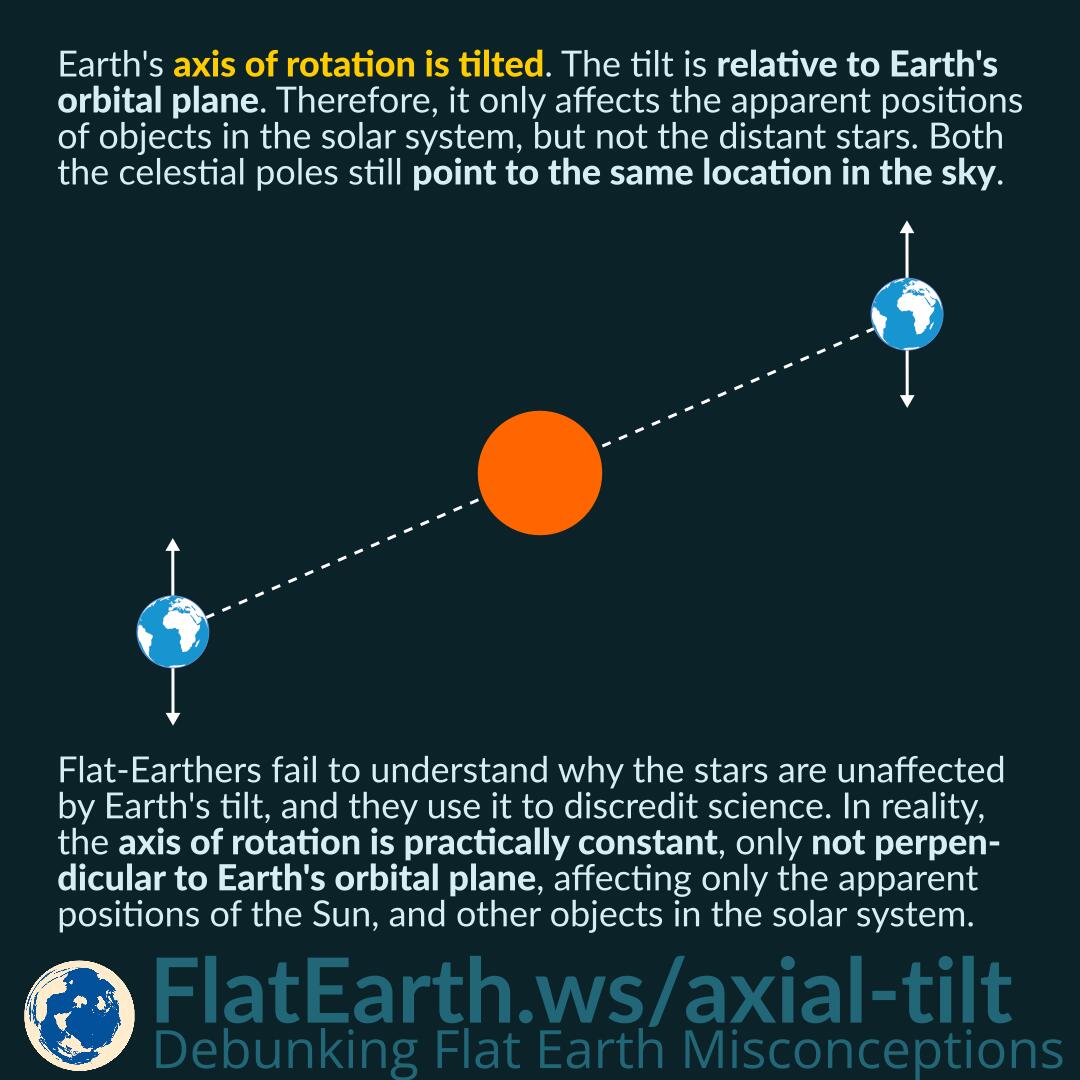Earth’s axis of rotation is tilted. The tilt is relative to Earth’s orbital plane. Therefore, it only affects the apparent positions of objects in the solar system, but not that of the distant stars. Both of Earth’s celestial poles still point to the same location in the sky.
Flat-Earthers fail to understand why the stars are unaffected by Earth’s tilt, and they use it to discredit science. In reality, Earth’s axis of rotation is practically constant in the short term, only not perpendicular to Earth’s orbital plane. As a result, it only affects the apparent positions of the Sun, planets, moon, and other objects in the solar system.






